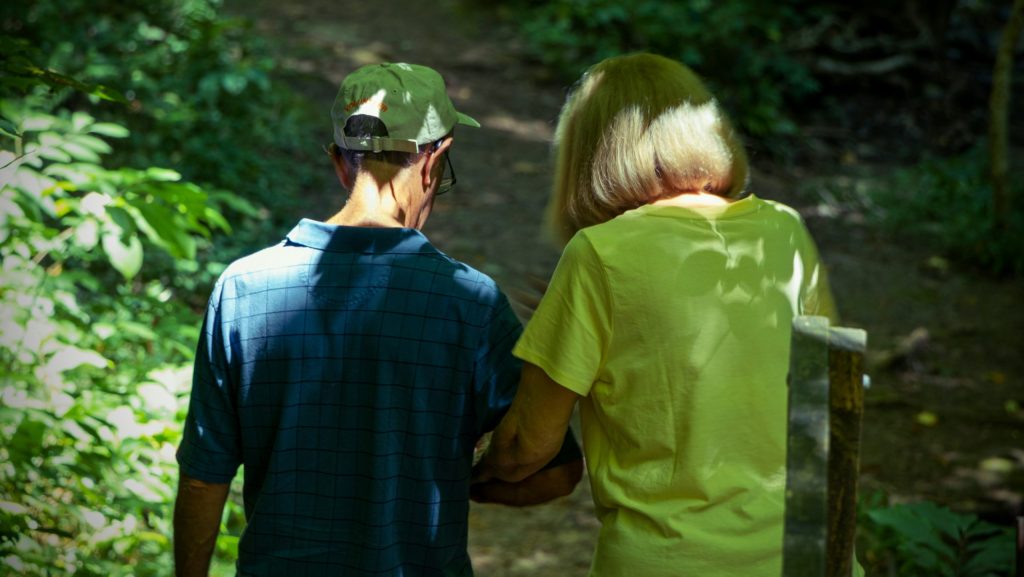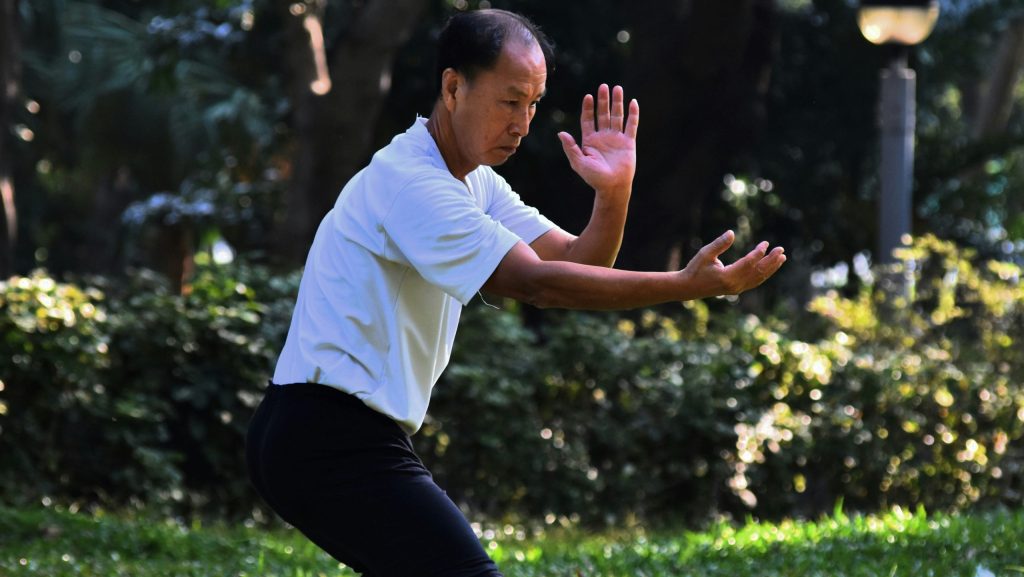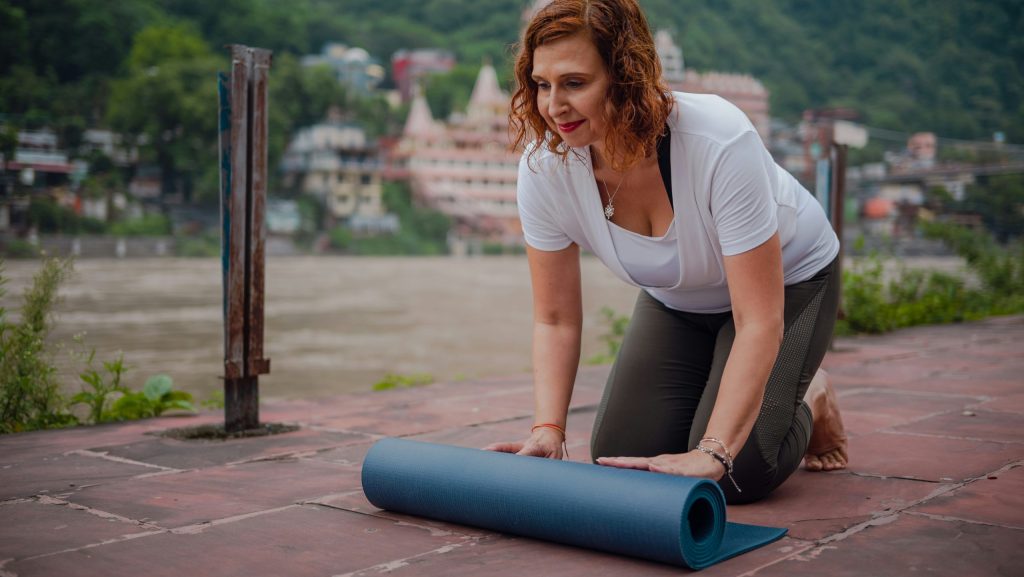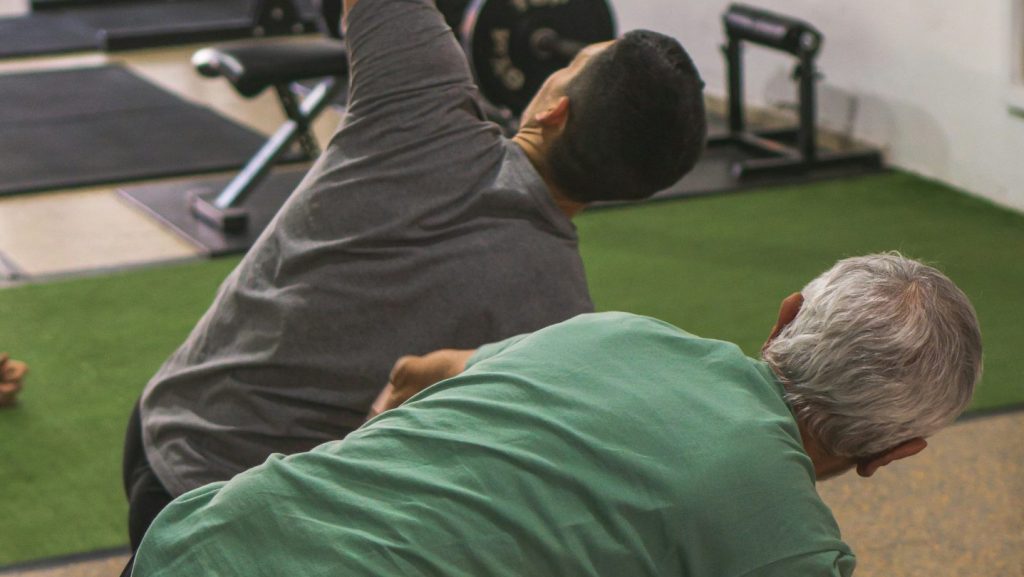Table of Contents
Maintaining physical activity is essential for health and well-being, particularly for those aged 80 and above. For seniors contemplating starting a fitness regimen, the benefits are substantial, including improved cardiovascular health and mental well-being. This article provides guidelines for seniors who are eager to begin exercising safely and effectively.
“Did you know? Regular physical activity can significantly enhance the quality of life for seniors, even those starting in their 80s. It’s never too late to start.”
It is crucial for seniors to tailor their fitness activities to their individual health conditions and physical capabilities. Research shows that regular physical activity helps manage and prevent chronic diseases such as heart disease, diabetes, and arthritis, while also improving mobility and independence. These improvements are critical for maintaining a high quality of life as one ages.
This guide covers several essential areas:
- Safe Exercise Fundamentals for Seniors: Focuses on the need for medical clearance before starting an exercise routine and how to accommodate existing health issues.
- Low Impact Workouts for Beginners: Details exercises that are gentle on the body, such as swimming, chair yoga, and walking, which are ideal for building fitness without overstraining.
- Strength Training for the Elderly: Discusses the importance of strength training in maintaining muscle mass and bone density, which can decline with age.
- Flexibility and Balance Exercises: Explains how improving balance and flexibility is crucial to preventing falls and improving overall mobility.
- Creating a Sustainable Exercise Routine: Offers advice on how to develop and maintain a routine that is enjoyable and beneficial over the long term, ensuring consistent participation in physical activities.
By focusing on these topics, the article ensures that seniors can approach fitness with the necessary knowledge and precautions. Engaging in physical activities in one’s 80s not only enhances physical capabilities but also contributes positively to overall health. This introduction leads into a detailed discussion of each topic, providing seniors with practical guidelines for starting their fitness activities. Each section aims to equip readers with the understanding needed to safely enjoy the benefits of increased physical activity.

Safe Exercise Fundamentals for Seniors
Starting a fitness routine at an advanced age, particularly for seniors in their 80s, necessitates careful planning to ensure safety and maximize health benefits. This section delineates the critical safety principles that seniors must consider before initiating an exercise regimen. It focuses on the necessity of obtaining medical clearance, accommodating chronic health conditions, and adopting a gradual approach to increasing physical activity.
Importance of Medical Advice Before Exercising
For seniors, particularly those initiating a fitness regimen in their later years, obtaining medical clearance is the first and foremost step. Consulting a healthcare provider ensures that the planned exercise activities are safe and appropriate for the individual’s health status and medical conditions. Healthcare professionals can provide invaluable advice on which types of activities are safe and which should be avoided based on an individual’s specific health concerns.
This consultation typically includes a thorough assessment of cardiovascular health, joint stability, and overall physical ability. Such evaluations are critical to prevent potential health complications and to tailor the exercise program to maximize benefits while minimizing risks. It is essential to discuss any symptoms that might affect exercise, such as chest pain, breathing difficulties, or excessive fatigue, with a healthcare provider. This step is vital for establishing a safe and effective exercise routine that supports long-term health and well-being.
“Exercise is a key component in managing chronic conditions such as diabetes and hypertension, with regular activity shown to improve overall health outcomes.”
Understanding and Managing Chronic Conditions
Many seniors manage chronic conditions that can significantly influence their ability to exercise safely. For example, conditions like arthritis, hypertension, diabetes, and heart disease require specific considerations when planning an exercise regimen. Those with arthritis may need to focus on low-impact exercises to avoid excessive joint stress, while individuals with heart conditions might need to monitor their heart rate closely during physical activities.
Managing these conditions effectively through exercise requires an understanding of the limitations they impose and adjusting the exercise intensity and duration accordingly. Exercise can serve as a powerful tool for managing chronic conditions, improving overall health, and maintaining independence. However, it must be approached with strategic planning and modification based on individual health needs.
| Condition | Exercise Consideration | Benefit |
|---|---|---|
| Arthritis | Low-impact activities | Reduces joint pain |
| Hypertension | Moderate intensity | Lowers blood pressure |
| Diabetes | Regular aerobic exercise | Controls blood sugar |
Establishing a Gradual Exercise Routine
For seniors starting exercise, it is safest to begin slowly and increase activity gradually. A gradual approach allows the body to adapt to new activities without the strain that intense, sudden exercises can cause. Seniors should start with simple activities, such as walking or light stretching, and progressively increase the duration and intensity of these activities as their fitness levels improve.
This method helps prevent injuries and builds confidence necessary for maintaining an exercise routine. Setting realistic goals and recognizing small achievements are important for maintaining motivation. Additionally, incorporating a variety of exercises can keep the routine engaging and help prevent boredom, which is often a barrier to consistent exercise.
Professionals recommend that seniors include exercises that improve strength, flexibility, and balance. These elements are essential for preventing falls, enhancing mobility, and improving overall quality of life. Each session should begin with a warm-up to prepare the body for activity and end with a cool-down to help the body return to its resting state, reducing the likelihood of post-exercise discomfort or injury.
Applying these safety fundamentals is crucial for seniors starting an exercise regimen. Proper medical clearance, understanding how to manage health conditions during exercise, and gradually increasing activity levels enable seniors to safely enjoy the numerous health benefits of exercise. The subsequent sections will explore specific low-impact workouts suitable for beginners, emphasizing safety and effectiveness in senior fitness programs. These workouts provide practical options that enhance health without undue risk.

Low Impact Workouts for Beginners
Low impact workouts are essential for seniors, especially those in their 80s, who may have mobility limitations or health concerns that preclude more vigorous activities. This section details several gentle yet effective exercises that improve health without overly stressing the body.
Benefits of Swimming and Water Aerobics
Swimming and water aerobics are excellent options for seniors seeking to maintain or improve cardiovascular health and muscle strength without the stress on joints typical of land-based activities. The buoyancy of water reduces stress on joints, making it ideal for individuals with arthritis or excess body weight, who might otherwise find physical activity painful.
Water aerobics utilizes the resistance of water to strengthen muscles and boost cardiovascular fitness, incorporating activities such as aqua jogging, leg lifts, and arm movements. These exercises are adjustable to fit individual fitness levels and capabilities, ensuring that everyone can participate safely and effectively.
Swimming engages almost all muscle groups and provides a comprehensive workout that enhances flexibility and endurance. The resistance provided by water ensures that muscles work harder than they would on land, yet the risk of injury remains minimal.
“Regular swimming can reduce the risk of chronic illnesses such as heart disease and type 2 diabetes by up to 40%.”
Chair Yoga and its Adaptability for Mobility Issues
Chair yoga is a tailored form of yoga that makes traditional poses accessible for seniors or individuals with limited mobility. This adaptation involves modifying poses to be performed from a seated position or using a chair for support, minimizing the risk of falls and physical strain.
The benefits of chair yoga include enhanced flexibility, balance, and strength, alongside reduced stress and improved mental clarity. Specific poses like the seated mountain pose, chair pigeon, and seated forward bend are designed to stretch and strengthen the body while being gentle on the joints.
Chair yoga is adaptable and can be practiced in various settings, including at home or in group classes. Instructors can modify poses to meet individual needs, ensuring that all participants can safely enjoy the benefits of yoga regardless of their physical condition.
Walking and its Cardiovascular Benefits
Walking is a highly accessible form of exercise for seniors that significantly benefits the cardiovascular system. It helps maintain a healthy weight, strengthens the heart, and increases lung capacity, while also reducing the risk of chronic diseases such as heart disease, diabetes, and hypertension.
Walking can be seamlessly integrated into daily life and adjusted in intensity to meet individual health statuses and fitness goals. Whether it’s a leisurely stroll or a structured walking regimen, the activity can be tailored to the senior’s capabilities.
To optimize the effectiveness of walking, consistency is crucial. Seniors should aim for realistic goals, such as walking for 30 minutes daily, to build endurance and establish a routine. Walking should be done in safe, well-lit areas, and, if possible, with companions or organized groups to enhance safety and provide social interaction benefits.
- Maintains a healthy weight
- Strengthens the heart
- Increases lung capacity
- Lowers risk of chronic diseases
- Can be easily scaled up or down in intensity
Low impact workouts are highly beneficial for seniors, offering activities that enhance cardiovascular health, flexibility, and muscle strength with minimal physical risk. The exercises detailed here—swimming and water aerobics, chair yoga, and walking—are specifically chosen to be manageable and beneficial for elderly beginners. Exploring each of these exercises in further detail will equip seniors and their caregivers with the information needed to safely incorporate them into regular fitness routines. Upcoming sections will delve into strength training and flexibility exercises, which can complement these low impact activities for a holistic senior fitness program.

Strength Training for the Elderly
Strength training is essential for elderly individuals because it helps preserve muscle mass, improves bone density, and supports overall health and mobility. This section provides detailed descriptions of effective and safe strength training exercises for seniors, focusing on the use of resistance bands, light weights, and bodyweight modifications.
Using Resistance Bands for Muscle Building
Resistance bands offer an adaptable level of resistance, suitable for seniors who may not be able to handle heavy weights. These tools are effective for enhancing both muscular strength and flexibility, making them a practical option for home workouts. Resistance band exercises include bicep curls and leg presses, which can be adjusted to individual strength levels.
For bicep curls, the band is positioned under the feet and held with both hands. As the hands curl up to the shoulders, the resistance helps build arm muscle. For leg presses, securing the band under a chair or foot and extending the legs outward utilizes resistance to strengthen leg muscles. Using resistance bands not only builds muscle but also improves balance and coordination, critical for preventing falls in the elderly.
Safe Use of Light Weights
Light weights are another effective method for seniors to engage in strength training. They facilitate muscle tone and strength building without the risks associated with heavier weights. Exercises include arm raises, shoulder presses, and wrist curls, which can be performed while seated to minimize the risk of falling.
Starting with manageable weights, such as one to two pounds, is advisable, with gradual increases as strength permits. Consistent use of light weights enhances functional movements like lifting objects or climbing stairs. Emphasizing proper technique is crucial; seniors should ideally perform these exercises under supervision initially to ensure correct form and prevent injuries.
“Regular strength training can increase the metabolic rate by up to 15%, helping seniors manage their weight more effectively.”
Bodyweight Exercises Modified for Seniors
Bodyweight exercises are highly accessible and can be tailored to individual fitness levels, making them ideal for senior strength training. Modifications ensure these exercises are safe, focusing on muscle strength, flexibility, and balance. Examples include chair squats and wall push-ups, which reduce physical strain while maintaining effectiveness.
Chair squats involve squatting to a chair and standing up again, which strengthens the legs and core while ensuring safety. Wall push-ups, performed by pushing against a wall instead of the floor, minimize wrist and shoulder strain. These exercises enable seniors to use their body weight to maintain muscle mass and improve endurance.
| Exercise | Modification | Benefit |
|---|---|---|
| Squats | Chair squats | Strengthens legs and core |
| Push-ups | Wall push-ups | Reduces strain on wrists |
| Lunges | Holding onto a chair | Improves balance, strengthens legs |
Regular participation in strength training is crucial for enhancing the quality of life in seniors by improving strength, stability, and independence. The exercises detailed here, including resistance bands, light weights, and modified bodyweight routines, provide safe and effective ways for seniors to maintain their physical health. Further sections will expand on specific routines and tips, helping seniors integrate strength training into their fitness regimen and maintain an active, healthy lifestyle.

Flexibility and Balance Exercises
Flexibility and balance are essential for seniors, as they are critical to mobility and fall prevention. This section details exercises aimed at enhancing these physical capabilities, focusing on stretching routines, Tai Chi, and Pilates, all adapted for elderly individuals.
Stretching Routines Suitable for Seniors
Stretching exercises are vital for maintaining the muscles’ length and flexibility, allowing joints to reach their full range of motion. For seniors, incorporating daily stretching into their routine can significantly improve mobility and the ease of daily activities.
Effective stretching exercises for seniors include neck stretches, shoulder shrugs, and ankle rolls. These can be performed either seated or standing, with support if needed, and should be held for 15 to 30 seconds, repeating two to three times each. Consistent stretching enhances flexibility, posture, and reduces muscle tension and soreness.
Dynamic stretches such as arm swings and leg raises are beneficial too, involving gentle swinging movements that improve range of motion and are ideal for warming up.
- Neck stretches: Enhance neck mobility and reduce stiffness.
- Shoulder shrugs: Relieve upper body tension and improve shoulder flexibility.
- Ankle rolls: Increase ankle flexibility and reduce stiffness.
Tai Chi for Balance and Mental Well-being
Tai Chi, a form of martial art developed in China, is characterized by its slow, deliberate movements and deep breathing techniques. It is especially beneficial for seniors, improving balance, coordination, and mental focus.
The practice of Tai Chi involves a series of movements executed in a slow, continuous sequence, coupled with deep breathing. This enhances muscular strength necessary for balance and reduces the likelihood of falls by improving functional mobility.
Tai Chi is adaptable and suitable for all fitness levels and can be performed in various settings without any special equipment. It is effective in reducing stress and promoting mental calmness.
“Studies show that seniors practicing Tai Chi at least three times a week can reduce their risk of falls by up to 43%.”
Pilates Modifications for Older Adults
Pilates is a form of exercise that emphasizes controlled movements and alignment, which can be modified to suit the needs of seniors. These modifications enhance core strength, stability, and mobility, making Pilates an excellent choice for improving flexibility and balance.
Using props like chairs or cushions can make Pilates exercises more accessible for seniors. For instance, leg circles and spine stretches can be performed while seated to minimize strain on the back and hips. These adaptations ensure that Pilates remains a safe and effective exercise option for older adults.
Regular Pilates practice helps in maintaining muscle elasticity and joint mobility, crucial for seniors’ overall health. It supports better balance and coordination, significantly reducing fall risks.
Exercises that enhance flexibility and balance are fundamentally important for seniors, helping to maintain mobility and reduce fall risks. This section has covered effective stretching routines, Tai Chi, and Pilates modifications tailored to meet the needs of seniors. These exercises offer practical tips for integrating such activities into a regular fitness regimen, promoting a safer, more active lifestyle for elderly individuals. Further details on combining these exercises with other fitness activities will be explored in the subsequent sections for a comprehensive approach to senior fitness.

Creating a Sustainable Exercise Routine
Maintaining a regular exercise routine is essential for seniors, promoting long-term health benefits and enhancing daily functioning. This section details how seniors can establish realistic fitness goals, diversify their workout activities, and monitor and adjust their routines effectively.
Setting Realistic Fitness Goals
It is crucial for seniors to set fitness goals that are specific, measurable, attainable, relevant, and time-bound (SMART). For instance, a practical goal could be to engage in 30 minutes of walking, five days a week, which directly contributes to improving cardiovascular health.
Goals should align with an individual’s current health status, considering any chronic conditions and physical limitations. Consulting healthcare providers can help tailor these goals to ensure safety and appropriateness. Incremental increases in activity levels can safely enhance physical capabilities without risking injury.
Incorporating Variety to Maintain Interest
Variety in an exercise regimen is key to keeping seniors engaged and motivated. Integrating different types of activities such as strength training, flexibility exercises, and aerobic workouts can prevent boredom and address all aspects of physical fitness.
Offering a mix of activities also ensures a comprehensive approach to health by working various muscle groups and enhancing different physical skills. For example, alternating between activities like yoga, swimming, and cycling can keep the regimen interesting and effective, allowing for rest and recovery of specific muscle groups while others are targeted.
- Yoga: Improves flexibility and mental calmness.
- Swimming: Enhances cardiovascular health and is low-impact on joints.
- Cycling: Increases leg strength and stamina.
Tracking Progress and Adapting as Needed
Keeping track of exercise progress is vital for sustaining motivation and ensuring the effectiveness of the fitness routine. Seniors can use simple tools such as exercise logs or more sophisticated technology like fitness trackers to monitor their activities, which helps in assessing the routine’s success and making necessary adjustments.
“Adults over 65 who engage in regular physical activity can reduce the risk of falling by up to 30%.”
Regular evaluations allow for adjustments based on actual performance and changing health conditions. If goals are consistently unmet, it may indicate the need for modifications in the type or timing of exercises. Adapting the routine based on ongoing assessments ensures the exercises remain suitable and beneficial, enhancing overall adherence and results.
Creating a sustainable exercise routine is vital for seniors to continue benefiting from the health advantages of regular physical activity. This segment has discussed methods for setting achievable fitness goals, diversifying exercise routines to maintain engagement, and the importance of monitoring and adapting the regimen as needed. These strategies facilitate an active lifestyle conducive to senior health and wellness. Future sections will explore specific exercises and tools to further support seniors in maintaining their fitness routines effectively.

Conclusion: Maintaining Physical Activity for Seniors in Their 80s
This article has provided detailed guidance on establishing and maintaining a fitness routine for seniors, highlighting how to adapt activities to suit individual health needs and capabilities. From obtaining necessary medical clearance to engaging in varied exercise activities that promote overall health, the advice given is designed to assist seniors in achieving a healthier, more active lifestyle.
“Take the first step towards a healthier future. Engage in regular physical activities tailored to your needs and capabilities. Remember, it’s never too late to start improving your health and quality of life.”
Summarizing Key Insights
- Obtain medical clearance and understand health conditions before starting exercise.
- Engage in low impact workouts like swimming, chair yoga, and walking to maintain fitness without strain.
- Include strength training using safe methods like resistance bands and light weights.
- Perform flexibility and balance exercises, such as Tai Chi and modified Pilates, to prevent falls.
- Set realistic goals, diversify workouts, and track progress to maintain an effective exercise routine.
This guide serves as an invaluable resource for seniors and their caregivers, emphasizing the importance of a well-rounded exercise regimen that includes safe, tailored activities to enhance various aspects of physical health. By understanding and implementing the strategies outlined here, seniors can significantly improve their mobility, strength, and independence. The commitment to regular, sustainable physical activity is a proactive approach to maintaining health and enhancing the quality of life in older age. Future sections will explore specific exercises and tools to support seniors in maintaining their fitness routines effectively.
Citations:
- Szychowska, A., & Drygas, W. (2022). Physical activity as a determinant of successful aging: a narrative review article. Aging Clinical and Experimental Research, 34(6), 1209–1214. PMID: 34873677; PMCID: PMC9151514; DOI: 10.1007/s40520-021-02037-0.
- Szychowska, A., & Drygas, W. (2022). Physical activity as a determinant of successful aging: a narrative review article. Aging Clinical and Experimental Research, 34(6), 1209–1214. doi:10.1007/s40520-021-02037-0. PMID: 34873677; PMCID: PMC9151514.